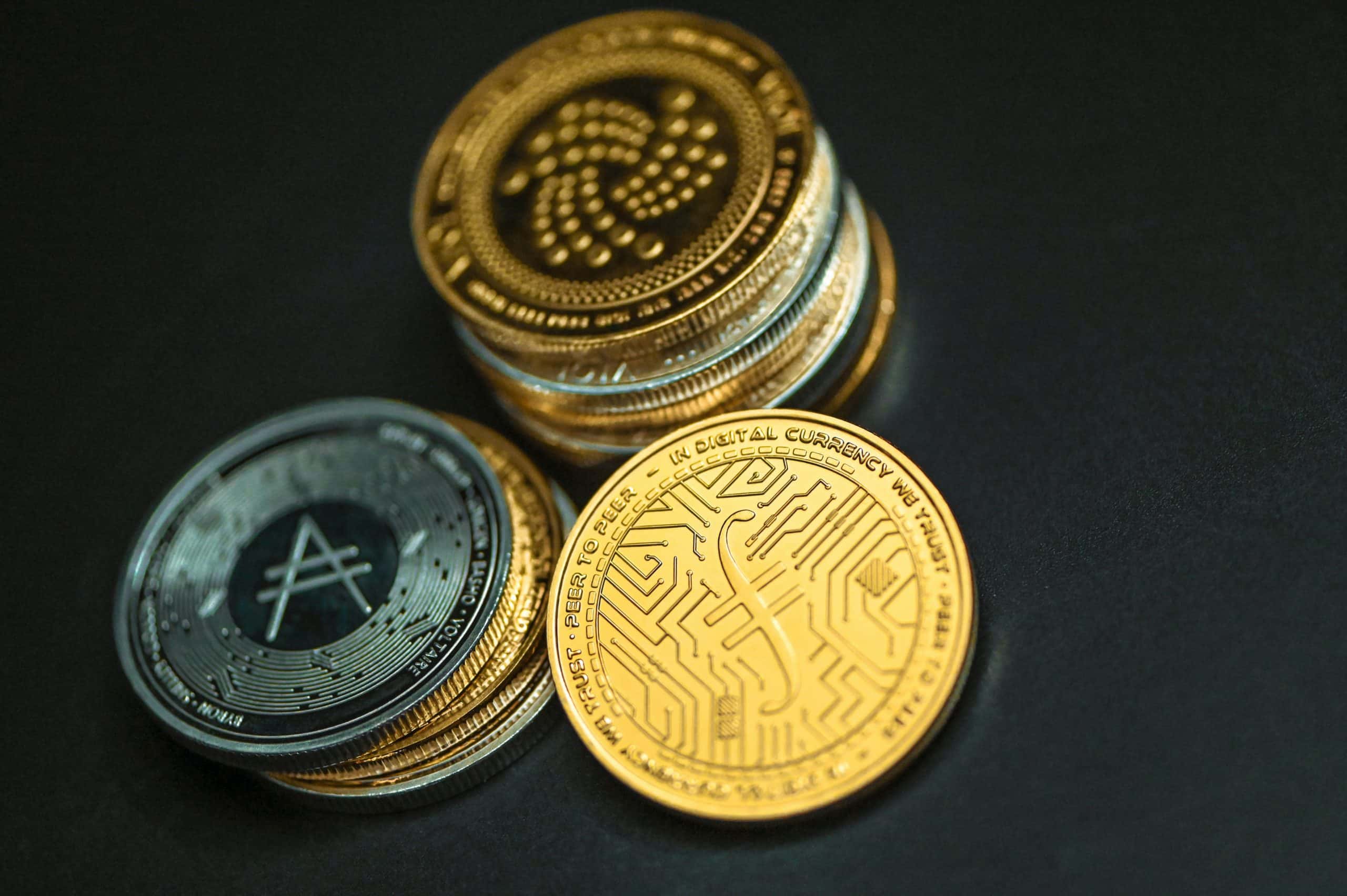If are reading this, then you probably are either already interested in crypto, or you keep hearing about it and are wondering what it’s all about. Either way, let’s make sure everyone understands the basics, because if there’s anything you can say about crypto, it’s that it’s a world unto itself, with a whole set of jargon, memes and inside jokes. But before we can get to the fun stuff, here’s my brief tour through the top 10 terms essential to understanding crypto.
1. Bitcoin
Bitcoin is one word, but there are two meanings. Bitcoin with a capital B refers to the Bitcoin network, which is the network of computers all over the globe that run the Bitcoin software. This network maintains a ledger (called the Bitcoin blockchain), or history, of all the transactions on the Bitcoin network since it began running in January 2009.
Bitcoin with a lowercase b is the digital asset native to the Bitcoin network. The reason bitcoin the asset was so revolutionary was that it was the first digital object that could not be copied. For previous digital objects like photos or text messages, whenever people sent them to each other, they were always sending a copy.
Bitcoin is also well-known for its monetary policy, which features a cap on its supply of 21 million. Although not all bitcoins have been minted yet (the software mints new bitcoins, on average, every 10 minutes), even after the cap is asymptotically reached around the year 2140, there will still never be more than 21 million bitcoins.
While there are many types of digital assets, bitcoin is designed like a currency. However, though the Bitcoin white paper is subtitled, “A peer-to-peer electronic cash system,” because of bitcoin’s scarcity, it is currently used mostly as a form of digital gold, fulfilling what is called the “store of value” function of money. But given the ever-changing nature of cryptocurrency, it’s possible bitcoin could at some point take up the other functions, which include “unit of account” and “medium of exchange.”
2. Blockchain
A blockchain is like a string of time-stamped snapshots of a giant spreadsheet in the cloud, with each snapshot tied to the next with super-hard math, or cryptography. For each snapshot, the spreadsheet gets updated with all the transactions since the previous snapshot, and each version of the snapshot is given a fingerprint called a hash. Even if one digit or decimal place were changed in the data in that snapshot, the fingerprint or hash would look wildly different. That fingerprint is then included in the next snapshot, or block, which is how these blocks get “chained” together. If someone were to try to change a transaction a few blocks (snapshots) back, then the math linking the blocks since then would no longer check out.
3. Decentralization
One crucial point to understand about blockchains is that they’re (or at least they should be) decentralized. To understand how decentralization works, it’s instructive to go back to the 1800s, to the South Pacific island of Yap. There, the islanders used a non-technological type of blockchain called Rai stones. Rai stones were used as money, but because they could be huge (as big as 12 feet in diameter or height, weighing thousands of pounds), it was impractical to move them around between individuals for payment. So the families would gather periodically and announce all the transactions that they had recently made, and every family would have to notate them all on their own ledger. If any versions differed, majority ruled, but no single family or Rai stone CEO called the shots. This is pretty much a no-tech version of what blockchains do.

In contrast, the traditional financial system today is more centralized. Individuals or entities hold accounts at, say, banks, and each bank is tasked with managing the transactions and ledger for each account, which they then have to reconcile with other bank ledgers whenever the customer transacts with an entity that has an account at another bank. Another good comparison is something like PayPal, which was the internet’s first widely used financial system. It had a company with an executive suite, while Bitcoin was completely leaderless. No company, CEO or board of directors hired a bunch of people to grow the Bitcoin network–it just happened organically, with people incentivized to help Bitcoin by the design of the software itself. And yet, now, PayPal’s market cap is $345 billion and Bitcoin’s is, as of press time, $880 billion.
4. Ethereum
Ethereum, currently the second-largest crypto network or blockchain, has a different function from Bitcoin. If the purpose of the Bitcoin blockchain was to produce decentralized money, Ethereum is more like a decentralized computer running decentralized apps (often called dapps). The creator of Ethereum, Vitalik Buterin, was an early enthusiast of Bitcoin and, in 2013, he saw that many new blockchains were adding features one by one. He wondered why there couldn’t be a blockchain made of a programming language that would enable developers to create any decentralized apps they could dream up, just like, for instance, the Apple App Store offers a variety of apps.
Ethereum has a native asset, ether (ETH), which is required to perform computation on the network. In that way, it’s often been compared to gas, and indeed, the fees to conduct a transaction in Ethereum are denominated in gas. Just as going a short distance in a car would require some amount of gas and going a long distance would require more, doing a basic transaction in Ethereum would cost, say, X amount of gas, and a complex transaction could require some multiple of X.
How the value of ether the asset is calculated is more complicated than for bitcoin, however, the general gist is that the more the Ethereum network or blockchain is used, the more ether will become deflationary, meaning more ETH will be burned than will be minted per block (or some unit of time). So the value of ETH is tied to the popularity of Ethereum itself.
5. Miner/validator
Earlier when I mentioned that people were incentivized to help the Bitcoin network grow by the design of the software itself, I was referring to a process called mining, in which entities compete to win the new bitcoins being minted roughly every 10 minutes by the software. The miner that wins that competition gets to add the new block of transactions to the blockchain, and receives the newly minted bitcoins. (Currently, this so-called block reward is at 6.25 bitcoins every 10 minutes, but this gets halved every 210,000 blocks, which is roughly every four years. At inception, the software minted 50 new bitcoins every block and that reward has halved now three times.)
But the block reward isn’t just a giveaway of a valuable asset to any random person on the internet. When a miner adds their computer power to the network, they are adding security to the network, making it harder for an attacker to take it over and, for instance, make counterfeit coins or change recent transactions. In order for an entity to do that, they would need 51% or more of the so-called hash power on the network, and because mining has become so competitive, now only expensive, specialized computers, usually owned by pretty professional outfits, can do it and be profitable. This is how, despite not having a CEO who hired a security or IT team, Bitcoin has had a 99.99% uptime since the network launched, and its total market cap is within spitting distance of that of some of the most valuable companies in the world.
(In Ethereum and some other blockchains, miners are called validators, although there are many other names for them, such as “bakers” in the Tezos blockchain.)

6. Smart contracts
So much of the world today is run by centralized entities. When we email each other, usually we are using Google or Yahoo or Microsoft or another large company’s email service. A few big players like Amazon Web Services or Dropbox manage file storage. And in the US, four major banks dominate when it comes to our finances. However, in a decentralized world, how will transactions be enforced if there’s no external parties involved, keeping one side or the other from being swindled and ensuring that the terms of the agreement are kept? The answer is smart contracts.
Smart contracts are software programs, rather than centralized entities like corporations, that ensure the parties in an agreement follow through on the terms when certain conditions are met. For instance, if I agree to buy your house, under the current system, we use an escrow service to ensure that you give me the deed and I give you the money and that you don’t take the money without giving me the deed, and I don’t take the deed without giving you the money. But this type of transaction could be handled by software, and many are already–especially when it comes to digital assets. (At this moment, most real-world assets like houses are not easily traded via blockchains.)
7. DeFi
Decentralized Finance, or DeFi, for short, is basically a world of smart contracts that perform financial functions–meaning, no middlemen such as banks or traditional financial institutions involved. For instance, in DeFi, instead of a bank offering loans, there are borrowing and lending protocols like Compound, which is a set of smart contracts on Ethereum that enable people to put up collateral and take out a loan. (Ethereum is currently the chain most widely used for DeFi, although other chains are competing to build such ecosystems and draw DeFi developers to build dapps.) Another popular type of DeFi application is a decentralized exchange or “dex,” which is a set of smart contracts that enable people to trade, without having to keep their cryptocurrency on a centralized exchange, which might be hacked. (Obviously individuals can be and are hacked, but hacks of exchanges offer a greater reward to hackers.)

If you’re familiar with the world of fintech, you’ll recognize the analogs in DeFi. In addition to lending and borrowing protocols, high-yield savings products and decentralized exchanges, there are even decentralized versions of robo-advisors like Betterment or Wealthfront. While the yields are appealing (at times, different protocols will offer schemes called liquidity mining programs intended to draw liquidity to their platforms with high interest rates, while those who chase such returns are called “yield farmers”), they can come at a high cost. Hacks are commonplace, and because the Ethereum blockchain is pretty congested at the moment (the network will undergo an upgrade in 2022 that hopes to address this), gas fees are so high that unless you’re trading with more than $10,000, you likely won’t make returns that offset your expenses. (Currently, many people with lower budgets are using so-called “layer 2” scaling solutions, which aren’t as congested and so are able to do gas-guzzling DeFi transactions while charging nominal gas fees.)
8. NFTs
To understand non-fungible tokens (NFTs), let’s back up and take a look at bitcoin again. Although bitcoins were the first digital asset that could not be copied, each bitcoin is fungible, or interchangeable with every other bitcoin, just as a dollar bill is fungible with other dollar bills. When you go to the drug store and get change back, you don’t protest to the cashier that you don’t like the dollar bill they gave you and that you’d like another one. Same with a bitcoin. (Plus, unless you receive a newly minted bitcoin, chances are that if you were to purchase one whole bitcoin, it would actually be composed of the change of many previous transactions, all adding up to 1 bitcoin.)
In contrast, a non-fungible token is unique. It’s like the Mona Lisa. Even if I were to pain an exact replica of the Mona Lisa, to the point where even an art forgery expert could not tell them apart, still, my duplicate would be nowhere near as valuable as the original Mona Lisa. In the same way, an NFT is a unique token, like a collectible, or one in a limited-edition series, such as a ticket to an exclusive, 100-person event.
This is why some of the most popular NFTs are actually of digital items that can be seen or experienced by anyone on the internet. For instance, NBA Top Shot is a game of NFTs of video highlights and other collectibles from NBA history. While anyone can go online and see a video of Michael Jordan’s winning shot at a championship (sorry, I am not a sports person so I can’t reference an actual event), only one person can have the NFT of it. However, you can make an NFT out of anything: while digital files such as jpegs or mp3s are easiest, you can make an NFT out of a physical artwork or an event ticket or a gaming object or voucher redeemable for lunch with a celeb or an hour of a CEO’s time.

A couple of things to remember: owning the NFT of something is not the same thing as owning that thing, or owning the copyright to it. Owning an NFT of that Michael Jordan slam dunk clip doesn’t mean you own that video or that the NBA has given you the copyright to it. And since the underlying work is often stored elsewhere from the blockchain on which the NFT lives (typically Ethereum), there have been instances where the underlying work got moved or went missing. Other times, someone has bought an NFT only to find out that the person who created it did not have the rights to do so. Right now, it’s the Wild West in NFTs, so beware.
9. DAOs
Decentralized autonomous organizations (DAOs) are an attempt to solve one of the perennial problems of blockchains. Since there’s no CEO and board to call all the shots, and since every token holder can claim to be a part user-owner of the network, when some segment of the community wants to make a change, it’s hard to know whether or not they represent a majority and whether that change should be pursued.
Decentralized autonomous organizations solve for that at the outset. They have clear governance structures and are run like mini-democracies whose rules are encoded in smart contracts, in which token holders are the voters. (Many DeFi protocols are either already DAOs or on their way to becoming DAOs, in which the token of the DeFi protocol is a so-called “governance token” which gives the token holder the right to vote on proposals to change the network.) Like any organization, DAOs can have treasuries, but unlike traditional organizations, often the money inside cannot be accessed except within the rules established by the group.
Although DAOs seem more egalitarian in that they aren’t traditional hierarchical organizations controlled by a small number of people, that doesn’t mean they don’t have issues. Some DAOs have found that so-called whales, or owners of huge amounts of a particular coin, can dominate voting. One potential solution to this problem is called quadratic voting, in which more weight is given to proposals that receive votes from a larger number of entities, while proposals that receive support from a small number of whales are given less weight.
10. Stablecoins
You’ve probably heard about crypto’s infamous volatility. Although Bitcoin went from a value of nothing to around $45,000 as of press time in 11 short years, along the way, its price has seen bubbles and bursts, with the value multiplying by 10 in a few weeks, and then later falling back down by 80-90%. Well, this is where stablecoins come in. A stablecoin is a digital asset or cryptographic token whose value is pegged to some underlying asset, typically a fiat currency. The most widely used stablecoins all have their value pegged to the dollar, but there are also stablecoins for other currencies such as the euro or British pound. Stablecoins are the linchpin of the trading world. Some of the most common crypto trading pairs are a cryptocurrency against a stablecoin (typically Tether). Currently, the total stablecoin supply is at $120 billion.
Stablecoins come in many varieties, with one being where they fall along the decentralization spectrum. Centralized currencies such as Tether (USDT) or USDC (from the Centre Consortium founded by crypto companies Circle and Coinbase) are those managed by a centralized entity that usually holds reserves in traditional financial institutions to back the digital dollar-pegged stablecoins that they issue. Stablecoins like Dai, which is issued by the MakerDAO system, are more decentralized because there’s no gatekeeper–anyone can use MakerDAO smart contracts to mint themselves Dai as long as they put up sufficient collateral.
Still, both of these types are backed by something — in the case of Tether and USDC, fiat reserves or other traditional collateral, and in the case of Dai, crypto collateral. Another type of stablecoin is what is known as an algorithmic stablecoin, which keeps its peg only through the rules of the smart contract. At this moment in time, algorithmic stablecoins have a pretty spotty history, with some like Basis Cash and Empty Set Dollar way off their peg. But that doesn’t stop the crypto community from trying.




